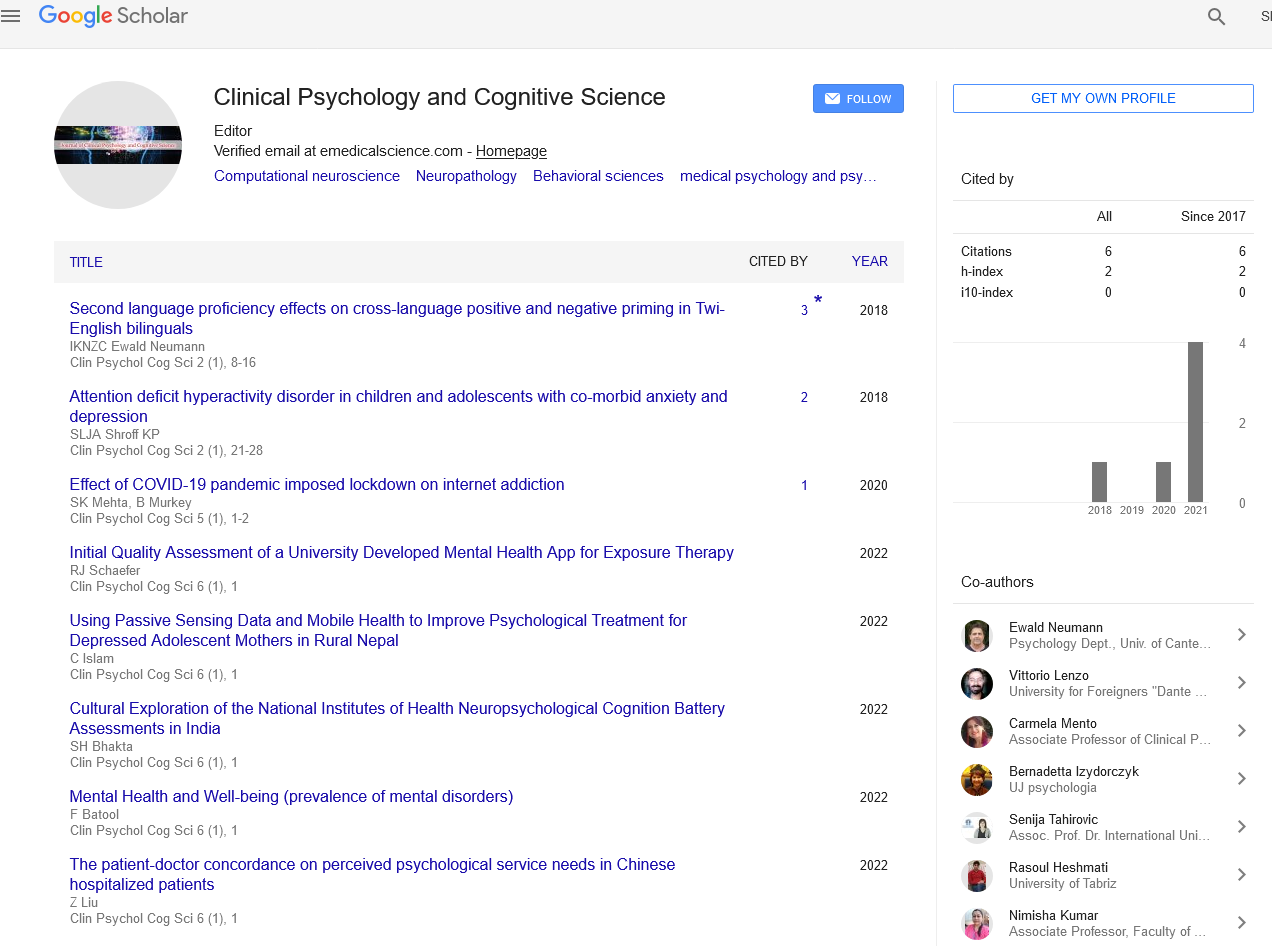Psychological distress of children during COVID-19
Received: 06-Sep-2021 Accepted Date: Sep 20, 2021; Published: 27-Sep-2021
Citation: Fasolo M. Psychological distress of children during COVID-19. Clin Psychol Cog Sci 2021;5(2):5.
This open-access article is distributed under the terms of the Creative Commons Attribution Non-Commercial License (CC BY-NC) (http://creativecommons.org/licenses/by-nc/4.0/), which permits reuse, distribution and reproduction of the article, provided that the original work is properly cited and the reuse is restricted to noncommercial purposes. For commercial reuse, contact reprints@pulsus.com
Abstract
On January 30, 2020, the WHO declared a health emergency of international concern after the first concentrations of people infected with COVID19 were diagnosed in China. The next day, the Italian government began to define initial containment measures, such as controlling people entering the country from China to prevent the spread of the infection in the country. From the second half of February, however, the number of Italian cases increased, especially in northern Italy. This prompted the government to announce the first restrictive measures in the so-called First Red Zone on February 21, including defined areas in the Lombardy and Veneto regions, the areas most affected by the infection.
Description
On January 30, 2020, the WHO declared a health emergency of international concern after the first concentrations of people infected with COVID19 were diagnosed in China. The next day, the Italian government began to define initial containment measures, such as controlling people entering the country from China to prevent the spread of the infection in the country. From the second half of February, however, the number of Italian cases increased, especially in northern Italy. This prompted the government to announce the first restrictive measures in the so-called First Red Zone on February 21, including defined areas in the Lombardy and Veneto regions, the areas most affected by the infection.
The living conditions of the families have changed suddenly and profoundly. In the home environment, the educational role of parents for children has become even more important than before. Children only have their parents close by, who can help with homework if needed and encourage positive development and new learning experiences for toddlers and preschoolers. Parents have been left alone not only in taking care of home-schooling their children at home, but also in caring for their children and the home environment in general. All other educational institutions are closed, babysitters and grandparents are not available, and contact with peers is not allowed. Many parents also need to work smart, and managing the time and space dedicated to working with children can be very challenging. While quarantine means that time spent with loved ones has increased, it also puts great pressure on parents' shoulders, as they have to take on an educational role as they try to live their own lives and at the same time go about their day. This situation has significantly increased the risk of stress and negative emotions in parents, with potentially cascading effects on children's well-being.
The social disruption of the pandemic and the changes in gender norms (convergence of equal roles in the home) that define our new "normality" have created higher levels of psychological distress, which has affected the quality of relationships between parents and children. The most common psychosocial and behavioral problems among children and adolescents in the pandemic have been reported to be inattention, attachment, distraction, and fear of asking questions about the pandemic. This risk is greatly increased in people with pre-existing mental illnesses. Amid the COVID-19 pandemic, the numbers for psychological counseling hotlines are seeing a huge increase in calls, with anxiety and adjustment issues at the top of the list. Additionally, the incidence of domestic violence in India is at a 10-year high during the COVID19 shutdown. Thus, the COVID-19 disease itself and its statewide lockdown and quarantine effects have and will trigger acute panic, anxiety, obsessive behavior, paranoia, and depression and can also lead to long-term post-traumatic stress disorder (PTSD). Identification of children and adolescents at risk by healthcare providers is particularly important during clinic visits/tele-consultations. It is important to investigate the psychiatric and psychosocial effects of social distancing and quarantine on families. Asking direct questions about the well-being and safety of the home is a crucial approach to assessing children at risk or affected by domestic violence. Other important interventions for families include referral to mental health resources, contact or emergency numbers, and counseling.





